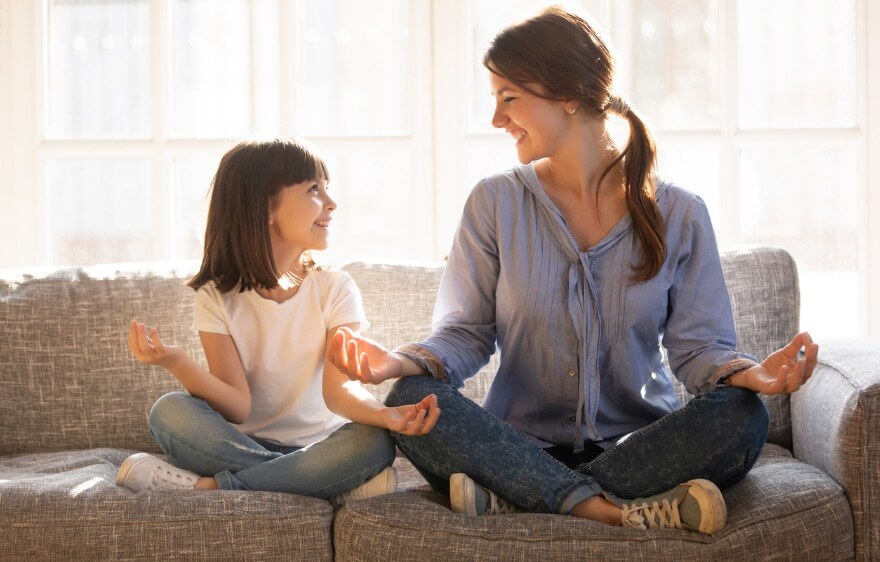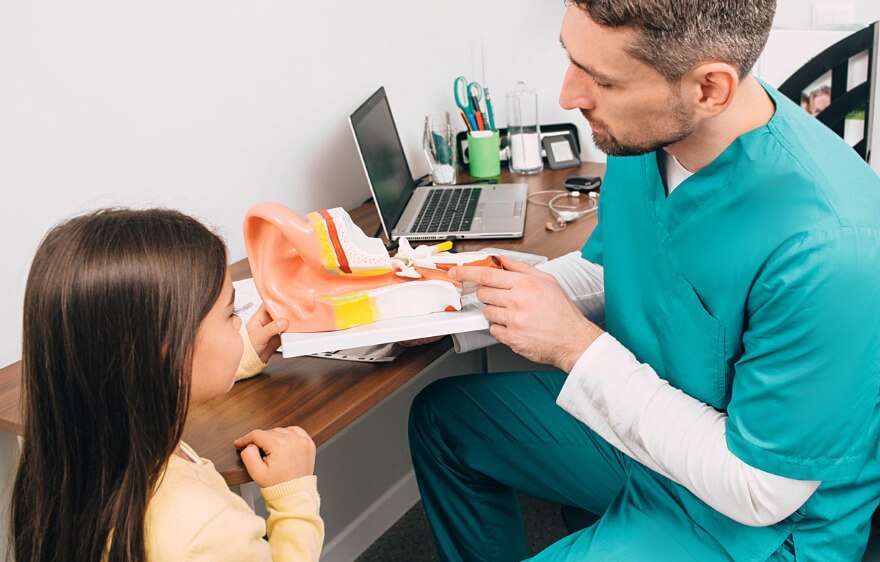Looking for an alternative therapy for ADHD? Try occupational therapy! When your child gets diagnosed with ADHD, you’ll likely be exploring various ways to help them thrive. While many treatments focus on medications, occupational therapy (OT) offers an incredibly enticing alternative. This blog explains what occupational therapy is, why it’s important, how it can benefit children with ADHD, and some exciting activities and techniques used in OT. Find out how OT can make a world of difference for your kiddo!
What Is Occupational Therapy?
Occupational therapy is a holistic approach to helping individuals develop, recover, or maintain the skills needed for daily living and working. For kids, OT often focuses on enhancing their ability to perform activities important for their development and education, such as playing, learning, and socializing. Occupational therapists use various techniques and activities to help children gain the skills to lead more independent and fulfilling lives.
Why Is Occupational Therapy Important?
Occupational therapy helps children with ADHD because it addresses the specific challenges they face in their daily lives. Children with ADHD often struggle with time management, organization, socialization, and functional tasks. OT provides personalized strategies and interventions to help them overcome these challenges. By improving these skills, OT enhances their academic performance and boosts their self-esteem and overall quality of life.
How Occupational Therapy Works for Children With ADHD
OT for children with ADHD has shown great results! We start with a comprehensive assessment of the child’s strengths and challenges. Based on this assessment, we create a tailored intervention plan that includes activities and techniques to improve specific skills. Here’s how OT can help:
- Time Management: Children with ADHD often struggle with understanding and managing time. OTs use visual schedules, timers, and time management games to help children grasp the concept of time, plan their activities, and stick to a schedule.
- Organization: Keeping track of tasks and belongings can significantly challenge children with ADHD. OT can teach organizational skills through sorting, categorizing, and sequencing. Techniques like checklists and organizing tools can help children manage their responsibilities more effectively.
- Socialization: Social skills are critical for children’s development, and children with ADHD often find it challenging to interact appropriately with their peers. OTs use role-playing, social stories, and group activities to teach children how to communicate, share, and cooperate with others.
- Functional Skills: Daily tasks such as dressing, eating, and personal hygiene can be difficult for children with ADHD. OT provides strategies and tools to help children become more independent. Activities include practicing self-care routines or using adaptive equipment to make tasks easier.
- Sensory Processing: Many children with ADHD also have sensory processing issues, making it hard for them to respond appropriately to sensory input. OT can help by providing sensory integration therapy, which involves activities that help children regulate their responses to sensory stimuli.
Examples of OT Activities and Techniques
The possibilities are endless! Occupational therapists use many fun and engaging activities to help children with ADHD develop essential skills. Here are some examples:
- Sensory Play: Playing with textured materials (e.g., sand, rice, or playdough) can help children with sensory processing issues. Sensory play helps children become more comfortable with different textures and sensations, improving their sensory regulation.
- Fine Motor Games: Games that involve manipulating small objects, such as building with Legos, threading beads, or tweezers to pick up small items, enhance fine motor skills and hand-eye coordination.
- Visual Schedules and Timers: Visual aids like schedules, charts, and timers can help children with time management and organization. These tools clearly represent tasks and time, making it easier for children to understand and follow a routine.
- Social Stories and Role-Playing: Creating stories that depict social scenarios and practicing them through role-playing can help children learn appropriate social behaviors. This technique allows children to rehearse social interactions in a safe and controlled environment.
- Gross Motor Activities: Activities that involve large muscle movements, such as obstacle courses, jumping jacks, or playing catch, help improve coordination, balance, and physical fitness. These activities can also provide an outlet for excess energy.
- Mindfulness and Relaxation Techniques: Teaching children mindfulness and relaxation techniques, such as deep breathing, yoga, or guided imagery, can help them manage stress and improve focus and self-control.
- Task Sequencing: Breaking down tasks into smaller, manageable steps and practicing them sequentially can help children with ADHD develop better organizational and problem-solving skills.
- Adaptive Equipment: Using weighted vests, fidget toys, or adaptive seating can help children with ADHD stay focused and calm during tasks.
How Occupational Therapy Can Help Your Child
Occupational therapy can be a game-changer for kids with ADHD. Here’s how it can help your child:
- Improved Academic Performance: By enhancing skills like time management, organization, and focus, OT can help your child perform better in school. They’ll be better equipped to complete assignments, stay on task, and manage their workload.
- Enhanced Social Skills: OT can help your child develop the social skills they need to make friends and interact positively with peers. This can lead to better relationships and a more enjoyable school experience.
- Greater Independence: By improving functional skills, OT helps your child become more independent in daily tasks. This boosts their confidence and reduces their reliance on others for basic activities.
- Better Emotional Regulation: Sensory integration therapy and relaxation techniques can help your child manage their emotions and reduce anxiety. This leads to a calmer, more focused demeanor at home and school.
- Increased Self-Esteem: As your child masters new skills and becomes more independent, their self-esteem and confidence will grow. They’ll feel more capable and proud of their achievements.
- Parental Support and Guidance: OTs often work closely with parents to provide strategies and support for managing ADHD at home. This collaboration ensures that the skills learned in therapy are reinforced daily.
Incorporating OT Into Your Child’s Routine
Incorporating the principles and techniques of OT into your child’s daily routine can make a big difference. Here are some tips to get started:
- Create a Structured Environment: Consistency and structure are key for children with ADHD. Establish a daily routine with clear expectations and use visual schedules to help your child stay on track.
- Use Positive Reinforcement: Encourage and reward your child’s efforts and achievements. Positive reinforcement can motivate them to keep trying and build their confidence.
- Set Up an Organized Workspace: Help your child create an organized, distraction-free workspace for homework and other tasks. Use organizers, labels, and checklists to keep materials and assignments in order.
- Incorporate Sensory Breaks: Include regular sensory breaks in your child’s day to help them manage their energy and focus. Activities like jumping on a trampoline, swinging, or playing with sensory toys can be beneficial.
- Practice Mindfulness Together: Incorporate mindfulness exercises into your family routine. Practice deep breathing, yoga, or guided relaxation to help your child develop these calming skills.
- Engage in Play-Based Learning: Use play-based activities to teach new skills. Games, puzzles, and creative projects can make learning more enjoyable and effective for children with ADHD.
- Collaborate With Teachers: Work with your child’s teachers to ensure they understand your child’s needs and the strategies that work best for them. Regular communication can help create a supportive learning environment.
Reap the Benefits of OT With Your ADHD Child
Ready to see it in action? Occupational therapy offers a wealth of benefits for kids with ADHD. If you want to help them develop the essential skills to improve their overall quality of life, it’s time to start. OT can make a significant difference in your child’s academic performance, social interactions, and independence by addressing time management, organization, socialization, and functional skills. With the support of a skilled occupational therapist, your child can thrive and reach their full potential. So, why wait? See how it can transform your child’s life!
Schedule Your Child’s Care Assessment Today
At Care Options for Kids, we understand the unique challenges of caring for a child with health conditions. Our dedicated team of pediatric home health nurses is here to support your family with compassionate, expert care tailored to your child’s needs. Contact us today to schedule an assessment and learn how we can help you navigate this journey with confidence and care.
Click here to start your journey to better care.






